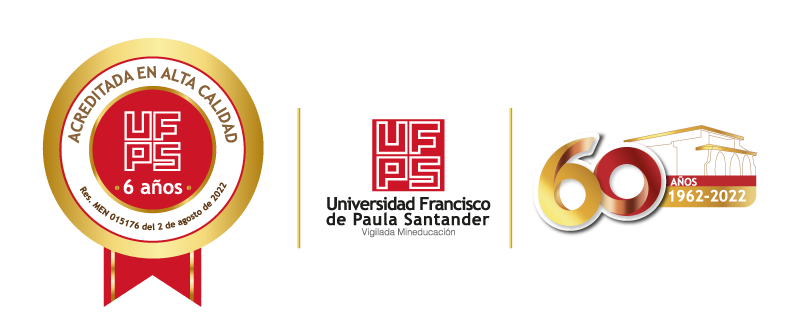Mostrar el registro sencillo del ítem
Design of a mathematical model for staff planning in an emergency department
| dc.contributor.author | Caicedo-Rolón, Alvaro Jr | |
| dc.contributor.author | calixto, nelson javier | |
| dc.contributor.author | Moreno Gamboa, Faustino | |
| dc.date.accessioned | 2025-03-06T14:02:03Z | |
| dc.date.available | 2025-03-06T14:02:03Z | |
| dc.date.issued | 2024-03-29 | |
| dc.identifier.uri | https://repositorio.ufps.edu.co/handle/ufps/9175 | |
| dc.description.abstract | The emergency department plays a fundamental role in hospitals and critically affects a hospital's overall efficiency. Inadequate staff planning in emergency departments generates high costs, overcrowding, and patient dissatisfaction due to long waiting times, possibly putting the patient's health and life at risk. This research designed two mixed integer linear programming mathematical models. The first determined the optimal number of physicians required per shift and weekday in an adult emergency department to minimize the deviation between available and required capacity. The results of the optimization model would reduce by 16.07 % the required medical office staff per week, from 56 physicians in the current situation to 47, reducing staffing costs without impacting waiting times. Moreover, the overall physician utilization would be 95.01 % compared to 77.79 % in the current situation, indicating an adequate distribution of physicians on each shift of each day according to patient demand. These results contribute to the problem of high medical staff costs and overcrowding without sacrificing timeliness and quality of care. In contrast, the second model that minimized the number of physicians considering capacity constraints would increase the staff by 7.14 % concerning the current situation. This research was based on a model presented in the literature, but the objective function included the deviation variables as unrestricted in sign and a constraint to ensure that they were positive. The first model designed is presented as a tool to support emergency department managers in the medium-term planning of medical staff, ensuring an optimal solution to this problem | eng |
| dc.format.extent | 8 Páginas | spa |
| dc.format.mimetype | application/pdf | spa |
| dc.language.iso | eng | spa |
| dc.publisher | Eureka physics and engineering | spa |
| dc.rights | This work is licensed under a Creative Commons Attribution 4.0 International License. | eng |
| dc.rights.uri | https://creativecommons.org/licenses/by/4.0/ | spa |
| dc.source | https://journal.eu-jr.eu/engineering/article/view/3265 | spa |
| dc.title | Design of a mathematical model for staff planning in an emergency department | eng |
| dc.type | Artículo de revista | spa |
| dcterms.references | [1]Nezamoddini, N., Chou, C.-A. (2016). Staff level optimization in emergency department using two-stage stochastic program-ming. In Proceedings of the 2016 Industrial and Systems Engineering Research Conference, ISERC 2016. Anaheim, 1573–1578. | spa |
| dcterms.references | [2]Daldoul, D., Nouaouri, I., Bouchriha, H., Allaoui, H. (2015). Optimization on human and material resources in Emergency De-partment. 2015 International Conference on Industrial Engineering and Systems Management (IESM). https://doi.org/10.1109/iesm.2015.7380224 | spa |
| dcterms.references | [3]Allihaibi, W., Masoud, M., Cholette, M., Burke, J., Karim, A., Liu, S. Q. (2017). Optimising the service of emergency depart-ment in a hospital. International Congress on Modelling and Simulation. https://doi.org/10.36334/modsim.2017.i2.allihaibi | spa |
| dcterms.references | [4]Ahsan, K. B., Alam, M. R., Morel, D. G., Karim, M. A. (2019). Emergency department resource optimisation for improved perfor-mance: a review. Journal of Industrial Engineering International, 15 (S1), 253–266. https://doi.org/10.1007/s40092-019-00335-x | spa |
| dcterms.references | 5]Erhard, M., Schoenfelder, J., Fügener, A., Brunner, J. O. (2018). State of the art in physician scheduling. European Journal of Operational Research, 265 (1), 1–18. https://doi.org/10.1016/j.ejor.2017.06.037 | spa |
| dcterms.references | 6]Reveco, C., Weber, R. (2011). Gestion de Capacidad en el Servicio de Urgencia en un Hospital Publico. Revista Ingenier ́ıa de Sistemas, 25, 57–75. Available at: https://www.dii.uchile.cl/~ris/RISXXV/hospital.pdf | spa |
| dcterms.references | 7]Ganguly, S., Lawrence, S., Prather, M. (2014). Emergency Department Staff Planning to Improve Patient Care and Reduce Costs. Decision Sciences, 45 (1), 115–145. https://doi.org/10.1111/deci.12060 | spa |
| dcterms.references | [8]Güler, M. G., Geçici, E. (2020). A decision support system for scheduling the shifts of physicians during COVID-19 pandemic. Computers & Industrial Engineering, 150, 106874. https://doi.org/10.1016/j.cie.2020.106874 | spa |
| dcterms.references | [9]Loso, J. M., Filipp, S. L., Gurka, M. J., Davis, M. K. (2021). Using Queue Theory and Load-Leveling Principles to Identify a Simple Metric for Resource Planning in a Pediatric Emergency Department. Global Pediatric Health, 8, 2333794X2094466. https://doi.org/10.1177/2333794x20944665 | spa |
| dcterms.references | [10]Savage, D. W., Woolford, D. G., Weaver, B., Wood, D. (2015). Developing emergency department physician shift schedules optimized to meet patient demand. CJEM, 17 (1), 3–12. https://doi.org/10.2310/8000.2013.131224 | spa |
| dcterms.references | [11]Taha, H. A. (2012). Investigación de operaciones. México: Pearson Education, 2012. Available at: https://www.academia.edu/15590842/Investigaci%C3%B3n_de_Operaciones_9a_ed_Taha_H_2012_ | spa |
| dcterms.references | [12]Resolución 5596 de 2015. Por la cual se definen los criterios técnicos para el Sistema de Selección y Clasificación de pacientes en los servicios de urgencias ‘Triage’. | spa |
| dcterms.references | [13]Bezanson, J., Karpinski, S., Shah, V. B., Edelman, A. (2012). Julia: A fast dynamic language for technical computing. arXiv. https://doi.org/10.48550/arXiv.1209.5145 | spa |
| dc.identifier.doi | 10.21303/2461-4262.2024.003265 | |
| dc.publisher.place | Harju maakond, Estonia | spa |
| dc.relation.citationedition | Vol. No.2 (2024) | spa |
| dc.relation.citationendpage | 177 | spa |
| dc.relation.citationissue | 2. (2024) | spa |
| dc.relation.citationstartpage | 170 | spa |
| dc.relation.cites | Caicedo-Rolon, A. J., Cely-Calixto, N. J., & Moreno-Gamboa, F. (2024). Design of a mathematical model for staff planning in an emergency department. EUREKA: Physics and Engineering, (2), 170-177. https://doi.org/10.21303/2461-4262.2024.003265 | |
| dc.rights.accessrights | info:eu-repo/semantics/openAccess | spa |
| dc.rights.creativecommons | Atribución 4.0 Internacional (CC BY 4.0) | spa |
| dc.subject.proposal | Decision-making | eng |
| dc.subject.proposal | Healthcare | eng |
| dc.subject.proposal | Operations research | eng |
| dc.subject.proposal | Optimization | eng |
| dc.subject.proposal | Linear programming | eng |
| dc.subject.proposal | Hospital | eng |
| dc.subject.proposal | Emergency | eng |
| dc.subject.proposal | Management | eng |
| dc.type.coar | http://purl.org/coar/resource_type/c_6501 | spa |
| dc.type.content | Text | spa |
| dc.type.driver | info:eu-repo/semantics/article | spa |
| dc.type.redcol | http://purl.org/redcol/resource_type/ART | spa |
| oaire.accessrights | http://purl.org/coar/access_right/c_abf2 | spa |
| oaire.version | http://purl.org/coar/version/c_970fb48d4fbd8a85 | spa |
| dc.type.version | info:eu-repo/semantics/publishedVersion | spa |











